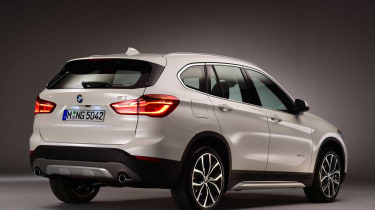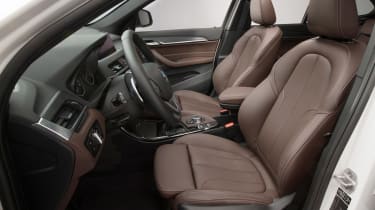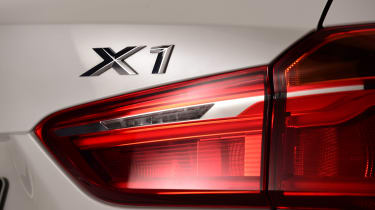Next BMW X1 gets new SUV styling and bigger boot
Bigger’s better as Mk2 BMW X1 now looks more like an SUV than an off-road estate - and it's more practical, too
BMW’s smallest SUV, the X1, isn’t so small any more. This is the new second-generation version, and along with larger dimensions inside and out, it’s got a taller, more rugged new style that makes its predecessor look like a low-riding estate.
“Our project goals were for a pure SUV design,” Ralf Gräser, project leader for the X1, told Auto Express. “This is what customers were asking for. The last one was more of a crossover, but this has a new architecture, so a new characteristic.”
An increase of 53mm in height but a decrease of 38mm in length gives it a more classic SUV silhouette – more like a mini X3. The seating position is raised by 36mm in the front and 64mm in the rear, too.
The new architecture Gräser referred to is the UKL2 platform – the same front and four-wheel-drive underpinnings as the 2 Series Active Tourer (and the next-generation MINI Countryman) and a larger version of the MINI hatch’s UKL1 platform. With transverse, rather than longitudinally mounted, engines, the bonnet is much shorter, so the A-pillar starts 150mm further forward, the dash is pushed much further back and the X1 has up to 66mm more legroom in the rear, even though it’s shorter overall.
The boot is also 85 litres larger than its predecessor’s, with a 505-litre capacity. Fold the 40:20:40 split rear bench, and that rises to 1,550 litres – 185 litres more than in an Audi Q3 – plus an optional sliding rear bench lets you trade knee room for yet more boot space. We sat in the back and, especially with the optional full-length panoramic roof, the feeling of light and space is a world away from the cramped outgoing model.
While the original X1’s engine line-up was all diesel, from launch the newcomer gets one petrol option – a 189bhp xDrive20i – alongside three diesels, ranging from a 148bhp sDrive18d (emitting 114g/km of CO2) to the 228bhp xDrive25d. A three-cylinder 16d, available only in front-wheel drive, will arrive a few months later.
The tweaked xDrive four-wheel-drive system turns only the front tyres most of the time, but can send up to 100 per cent of the torque to the rear when it senses slip. An optional Variable Sports Steering system reduces the effort at low speeds and adds weight when you up the pace, and two-stage adaptive dampers are offered for the first time. Firmer M Sport suspension can also be added, dropping the ride height by 10mm.
The interior is familiar BMW fare, with a driver-orientated centre console, a floating central display (with sat-nav as standard in the UK) and an optional head-up display for the first time. The model in our pictures is an Xline, with a rugged matt silver finish to the side sills and front and rear bumpers, and a choice of black or brown interior.
A Sport Line model throws in some colour with body-matched accents on the bumpers and red stripes inside, while the M Sport adds a deeper bodykit, 18-inch alloys and an M-specific leather steering wheel.
Prices will be revealed close to the X1’s launch in October, after it debuts at September’s Frankfurt Motor Show.
Now read our full long-term test review of the hi-tech BMW i3.
Find a car with the experts







